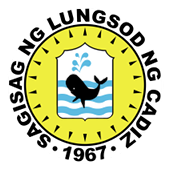WHERE TO EAT?
Topography
The city has a land area of 516.50 square kilometers as per data of the DENR and DBM. It has 22 barangays, 10 of which are in the Poblacion and 12 are outside the city proper. The city has a wide range of plain that serves as its economic and urban centers. It extends three to five kilometers from its coastline up to the agricultural zone of the city. Its slopes vary up to a maximum of 3%. The predominant terrain of the city is rolling which is suitable for agricultural farming. The maximum elevation of the city reaches over 1000 meters and is situated in the Marapara Range.
Six rural Barangays of the city have forested areas which form part of the Northern Negros Reserve and later on declared as National Park. These six barangays are Caduha-an, Mabini, Magsaysay, V.F. Gustilo, and C.S. Villacin. The forest land comprises 16.84% of the total area of the city.
The soil classification of the city is clay loam. Its climate is Type “A” using the system introduced by Pedro P. Hernandez of the Philippine Atmospheric, Geographical and Astronomical Services Association (PAGASA) wherein the analysis of the climate is based on the ratio of the number of dry and wet months. Type “A” is the wettest climate classification among the eight (8) types.
The city has seventeen (17) major rivers, namely: Sicaba, Talaba-an Daku, Talaba-an Diotay Tinampa-an, Hitalon, Lagasan, Manara, Dinaldangan, Hamticon, Hiyang-hiyang, Pacul, Sewahon, Iglanggam, Piyok, San Antonio, Nabinay and Dalayapan. Three (3) major rivers traverse the Urban Area, these are Hitalon, Tinampa-an and Talaba-an Diotay.
Registered Voters: 92,674
Population: 157,438

About
Contact
- PNP HOTLINE – 0998-178-2240
- PNP HOTLINE – (034) 4930-166
- DRRMO HOTLINE – 0909-140-6322
- DRRMO HOTLINE – (034) 493-1787 / (023) 4354-639
- CITY HEALTH OFFICE HOTLINE – (034) 4931-772 / 4450-117
